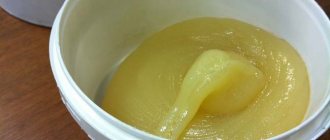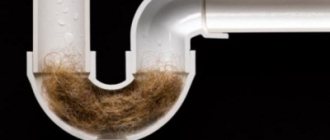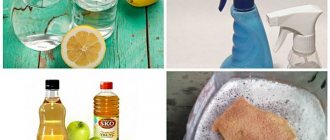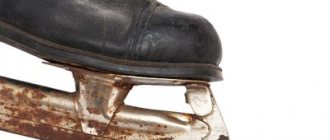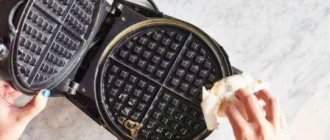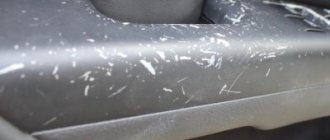Grouting the joints at the joints of the laid tiles is the final stage of the cladding work.
It may be necessary to remove grout for various reasons. This includes lack of accuracy in applying the product, the need to remove the old layer, and restoration.
When starting work, it is necessary to take into account the condition of the grout, its type, as well as the characteristics of the tile itself.
We will tell you in this article how and with what you can remove grout from tiles.
How to delete?
Removal of the grout layer is carried out in stages. First you need to remove the excess mass before it hardens. If you miss this moment, it will be much more difficult to remove the grout.
Fresh
During the first hours after application (up to 24 hours), the grout is still considered fresh. At this stage, until the mass has completely hardened, it is easiest to remove.
The process of washing off dry grout:
- Soak a sponge in water.
- Squeeze out excess water. If you do not do this, you can easily smear the composition over the entire surface.
- Use a damp sponge to gently remove excess grout in a circular motion.
It is better to remove grout from matte tiles and those with relief immediately with a dry cloth or rubber spatula. With a glossy surface, the rules are different - it is possible to eliminate flaws only the next day, otherwise scratches will remain on the smooth tile. As a result of wiping off fresh grout, there should be no streaks left on the tiles.
Cement
Cement grout contains sand. Due to this, the remnants of the applied product can be easily removed with a damp cloth .
The setting process of cement grout begins within 30 minutes. You can remove excess weight in several approaches. In this case, you should wash the rag as often as possible and wring it out very well so as not to smear the composition.
If the grout is dry, you need to proceed differently. Grout removers should contain acids:
- vinegar;
- salt;
- sulfuric;
- lemon, etc.
Even table vinegar shows good effectiveness.
Epoxy
Grouts based on epoxy resin are characterized by high performance. Among their advantages are rapid hardening and the formation of an even top layer without any tricks. In addition, epoxy grouts are available on the market in a wide range of shades.
During the first 24 hours, you can correct all errors with grout using special solvents and reagents.
Popular means include:
- Keranet;
- Sopro;
- Litokol;
- MAPEI and others.
Fast hardening is not always a plus. If the application was careless, then anything can be corrected only in the first hours. After 24 hours, the excess mass can only be removed by mechanical force.
Recommended cleaning times
Removal of the grout layer is carried out in several stages - from the initial removal of excess to dry and wet cleaning.
It is better to carry out the first stage when the material has not yet hardened, but has already hardened sufficiently. In this case, the risks of damaging the surface of the tile and disrupting the hardening process of the putty are minimized. It’s easy to check the condition of the seams - just moisten them with a damp cloth and evaluate the reaction.
If, after interacting with the liquid, the grout mass begins to increase in size and extend beyond the seam, it is too early to begin cosmetic work. If the layer remains unchanged and does not react to water in any way, then the moment for cleaning is most suitable.
Reference! The average initial setting time for tile grout is about 30 minutes.
How to clean a raised surface?
Spectacular design with relief tiles adds originality to the interior. But cleaning an uneven surface with grooves can be quite difficult.
You can use a recipe based on citric acid powder, a composition of soda and vinegar, as well as white spirit diluted with water (2 tablespoons of product per 500 ml of water).
One effective method is the use of citric acid.
Procedure:
- Soak a washcloth in water.
- Squeeze.
- Pour ½ tsp onto the working side of the washcloth. citric acid powder.
- Allow the powder to moisten.
- Clean the tiles.
Another cleaning method is based on the use of soda and vinegar:
- pour 3 tbsp into a container. soda;
- pour in 2 tbsp. vinegar;
- stir;
- apply the prepared product to the tiles;
- stand for 10 minutes;
- wipe with a damp sponge.
The sponge should not touch the seams between the tiles.
Chemical method
It is best to clean grout from tiles using chemical compounds. They are easy to work with if you follow the manufacturer's instructions. A representative of such products is Sopro ESE 548. A composition is used to remove fugue residues, including old ones.
Features of working with Sopro ESE 548:
- Apply for 20 minutes.
- It can be removed with an opener or a scraper.
- Wipe the entire surface with a damp sponge.
The first time it may not be possible to remove all the composition, then the process must be repeated from the very beginning. Sopro ESE 548 can change the color of the seam, which needs to be taken into account.
Other means for cleaning tiles from old grout:
- Litostrip - specifically for epoxy grout; to get results, you need to apply it to the seam and wait for the time specified in the instructions. Afterwards, the mixture is removed with a rubber spatula, and the tiles are washed with rags and water.
- Keranet – for ceramic tiles, available in the form of powder and aqueous solution. The main component is acid, which is equal in strength to sulfuric and hydrochloric.
The advantage of using organic acid is the absence of toxic fumes. The downside is that you won’t be able to remove grout residue on ceramic, marble, or limestone surfaces.
You can try folk remedies:
- The citric acid solution is applied to the seams with a rag. The product stays on all day and night. In the morning, excess material is removed with a spatula or knife, and then washed with water.
- Vinegar is diluted with water in a ratio of 1/2. Apply to a dirty surface and leave for half an hour. The mixture is removed with a spatula or other convenient tool.
- Glycerin is diluted in water in a ratio of 1/3. The solution is applied for an hour. The mixture is removed with a plastic tool, and then the seams are wiped with a damp cloth.
Instead of citric acid, you can use dishwashing detergent containing acid. You can remove grout residues with alcohol diluted in water. Soak a cloth in the solution and rinse the surface.
How to wash off porous?
Tiles with a porous surface are more difficult to clean than matte, glossy, or even textured tiles . Any dirt, including from grout, is literally absorbed into such a surface.
Mechanical treatment using brushes and scrapers will help solve the problem. If the grout has not set yet, you can clean it off with a rag soaked in vegetable oil.
The following composition can help with processing:
- Pour 3 tbsp into a container. soda, pour in 3 tbsp. vinegar and the same amount of lemon juice.
- Add 1 liter of water.
- Stir.
- Using a rag or napkin, thoroughly clean tile by tile, paying attention to any uneven surfaces on the porous surface.
If simple grout removal methods do not help, you can use professional acid removers.
Some important recommendations
To clean tile grout efficiently, you should pay attention to several important points:
- it is necessary to remove excess tile adhesive and grout immediately, preventing them from drying on the surface of the cladding;
- for scrubbing, it is better to use a sponge or a piece of foam rubber - if they do not help, you can use felt, burlap or any hard fabric;
- You cannot immediately start using acidic removers and aggressive solutions - you need to read the instructions and take into account the characteristics of the tile;
- It is better to clean vertical surfaces from top to bottom, horizontal surfaces - from the far corner to the door;
- You need to be careful when handling glossy tiles - they are easily damaged and leave streaks;
- white deposits from detergents and cleaning products can be easily removed with a dry felt glove;
- The cleaning should be completed by treating the seams with fungicides that protect the room from mold;
When working with chemicals, you must wear protective clothing, gloves and a respirator.
The effectiveness of all the above methods has been time-tested and tested by builders and craftsmen. It is enough to be patient, put in a little effort and money - and even the most persistent stains and the strongest grout will not leave a trace behind.
Seam processing
Seams treated during the repair process lose their attractive appearance over time. Dirt accumulates in the space between the tiles, dust settles, and splashes get in. If the tiles are laid in the bathroom, then mold may even appear in the seams.
solve the issue of cleaning the joints between tiles using one of two methods:
- chemical exposure;
- mechanical restoration.
Traditional methods
To clean the tiles, improvised means can be used. Those drugs that are already in the household will be used.
Recipes with the following active substances can be used as effective
- lemon acid;
- glycerol;
- soda;
- aqueous solution of vinegar;
- soda with vinegar, etc.
Special preparations
Suitable products for treating seams are preparations that are aimed at caring for ceramic coatings and cleaning them.
Such products have a complex effect on seams:
- Remove the fungus.
- Remove dirt.
- Eliminates mineral deposits.
- Removes odors.
Effective products include products from GlutoClean, Ceresit, Kilto, etc.
Mechanical methods
Contaminants that have accumulated between the tiles can be removed by mechanical action. One of the simplest options is to use sandpaper . But the use of this method requires thoughtful action and accuracy.
The sandpaper itself must be used so as not to scratch the tile. To do this, the working side must be very thin - no wider than the distance between the tiles. After sanding has been done, the surface should be washed with water and dried.
You can protect yourself when carrying out such important work by sticking masking tape to the edges of the tiles, along their perimeter.
Why do you have to remove the sealant?
When tiles are laid on a wall or floor, a small space is left between adjacent elements. This distance helps to evenly distribute the load on the surface, helping to preserve the coating. The seams between the tiles need to be sealed and at the same time give an attractive appearance to the surface. To do this, they are carefully filled with fugue, a mineral or polymer mixture of a suitable color.
Sometimes it gets on the tiles, and removing the frozen mass from the tile surface is a separate task. But more often you have to think about how to remove old grout from tile joints, and this question arises after prolonged use. The deterioration is manifested externally: the seams crack, change color, and darken due to mold. The causes of wear are the following:
- The grouting composition was chosen incorrectly, without taking into account the purpose of the room. For example, the kitchen and bathroom differ in temperature and humidity conditions, and accordingly, different compositions are needed.
Grout loses its appearance for many reasons Source rndtech.de
- The solution was prepared without regard to the instructions. The manufacturer always indicates the proportions and explains what the consistency should be. Manufacturing “by eye” will reduce the strength and, as a result, the durability of the seams.
- The work was done poorly. The sealant was applied carelessly, with omissions or not completely filling the volume.
- The tiled surface was not properly maintained. Some household chemicals (containing acid) corrode the grout.
- Violation of ventilation. Poor air exchange in a humid room inevitably gives impetus to the development of mold, and it, first of all, happily inhabits the joints of the seams.
- Sometimes the grout color is chosen poorly. For example, light-colored seams on the floor sooner or later lose their appearance and quality due to constant contamination.
Cleaning with a construction knife Source immo.vlan.be
Restoring old grout
Even when using very high-quality grout, it needs to be updated over time. Restoration measures will improve the appearance of the entire design and improve performance characteristics.
Available means
You can carry out the restoration of the seams yourself , using the tools that are at hand. The work is quite painstaking, but effective.
You can use any washing powder. First, you should prepare a cleaning paste from it. To do this, pour a little detergent into a separate container and add enough water to form a thick slurry.
Taking the resulting paste onto an old toothbrush, systematically clean the joints. After the seams are cleaned, the product is washed off. Dish gel has a similar effect.
After the treatment is completed, you need to brush the seams again. The final stage is polishing with a dry cloth or rag .
Special formulations
To restore (restorate) tile joints, commercial, ready-to-use special products can be used. They contain components that will not only refresh the color, but also remove deposits of foreign substances from the seams, as well as mold. After keeping on the surface for the time specified according to the instructions, the tiles are washed.
The funds can be used in two ways:
- In concentrated form - for serious stains.
- In diluted form - for not advanced cases.
If the grout is white, choose bleaching agents; if it is colored, choose products that do not discolor the shade.
Removing the top layer
For advanced cases, when the problem cannot be solved even mechanically, you can simply remove the top layer of grout. To achieve the result, it is enough to remove the grout to a depth of only 2 or 3 mm.
The layer removal process is performed as follows:
the joint of the slabs is pre-moistened - for cement compositions it is water, for epoxy compositions it is a solvent;- The layer is directly removed using a special tool, the work is carried out with a scraper;
- the edges are sanded using sandpaper;
- new grout is being prepared;
- a new portion of grout is applied on top of the old one to compensate for the missing volume; the work is performed with a rubber spatula.
Grouting is also possible using power tools. But it is recommended to bring such work only if you have relevant experience. Otherwise, there is a high probability of damaging the tile itself. It is not necessary to completely remove all the old grout.
Marker
In construction stores you can purchase a special waterproof marker for seams . This device allows you to camouflage unsightly seams quickly and easily. The seams are first washed with soapy water. If there are cracks, they need to be puttied in advance.
The disadvantage of this method is the camouflage itself. Using a marker does not fundamentally solve the problem of dirt and mold. This is a temporary solution, the effect of which lasts no more than a few weeks.
Types of mixture
Cleaning will depend on the type of grout. Each type has its own cleaning mixtures. For example, epoxy is more difficult to clean; it has improved characteristics and is resistant to chemical agents and moisture. It requires professional solutions.
Features of different grouting compounds:
- Cement - used for most types of tiles, it is convenient to work with, it is purchased in the form of a dry mixture. Various components can also be added to it to improve performance. Fugues based on Portland cement and sand are used for grouting joints no larger than 5 mm, but they are not at all suitable for ceramic coatings. Sand can damage the smooth surface of the tiles.
- Epoxy is a two-component product that is mixed before work; it is significantly superior to cement compositions due to its increased strength and moisture resistance. However, such grouting is used more often at production facilities; for home work it is complex and requires special skills. Removing epoxy grout is not an easy process. The material sets quickly, becoming very durable.
- Silicone - it is easiest to scrub using brushes and water, it is not very durable, it is easy to damage, so it is often used in combination with other grouts. The advantage will be a wide palette of colors.
Prohibitions when deleting
When removing grout, it is important to remember a number of prohibitions:
- You cannot use purchased solvents that are not intended for removing grout from tiles, as ignoring this point can lead to damage to the surface.
- You cannot begin general cleaning of the surface until the grout has completely dried and the main contaminants have been removed. Violating this rule may result in damage to the compound between the tiles.
- You should not use solvents, even homemade ones, with your bare hands. Rubber gloves are a necessary means of protection.
- Do not use a metal scraper or knife to clean directly on the tiles. Such a tool can leave damage not only on a glossy surface, but also on a matte and embossed one.
Homemade solutions
The total area of tiled finishing can be more than 50 square meters. m. To treat such an area, it is necessary to purchase a large volume of solvents, which contributes to additional costs.
You can replace professional products with homemade analogues:
- 20% solution based on laundry soap - suitable for removing cement and polyurethane;
- 10% acetone solution - effective for dissolving epoxy resin;
- A 10% dishwasher solution (chlorine-free) is useful for removing polyurethane.
Solutions containing acetone release volatile substances. Therefore, it is recommended to work with them wearing a mask and glasses. Also, when removing grout, the room must be ventilated.
Mechanical method
To remove material you will need these tools:
- A knife, screwdriver, gravel or chisel is not particularly large. Using these tools, the chance of damaging the tiles is not great, but removing them with the help of them is a rather labor-intensive process.
- Extender. The tool is designed to remove old grout, but it makes no sense to purchase it for one use.
- A quick way to remove it is to use an electric drill; you just need to use a small diameter drill so as not to damage the tiles. This method can only be used if the tile is very well “grabbed” with the base.
- A Dremel is an electric jigsaw that has a flat half-disc. Having experience in handling this tool, you can get rid of grout in a few minutes.
- To remove old grout on the floor covering, you can use a screwdriver with an attachment installed, which is a brush with metal bristles.
